The lathing for the gazebo
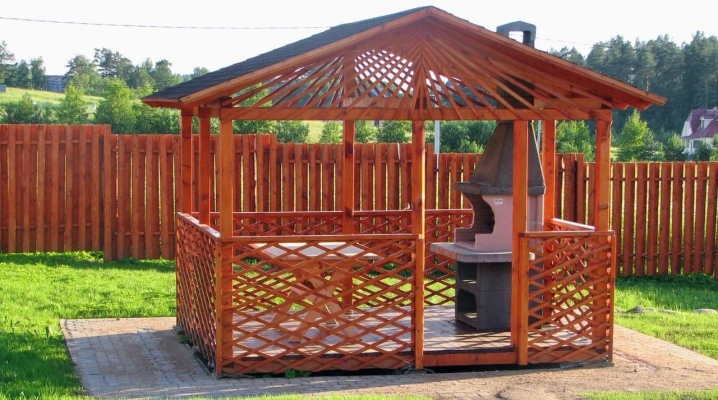
People have been building gazebos in their gardens for more than 5 thousand years; their appearance is attributed to Ancient Egypt. These amazing structures provide a pleasant shade and fresh air and their function has changed little over the millennia.
Lattice walls of buildings belong to the classic options. Thanks to them, the gazebo looks light and airy. Reiki is inexpensive, so the investment in its construction will be insignificant.
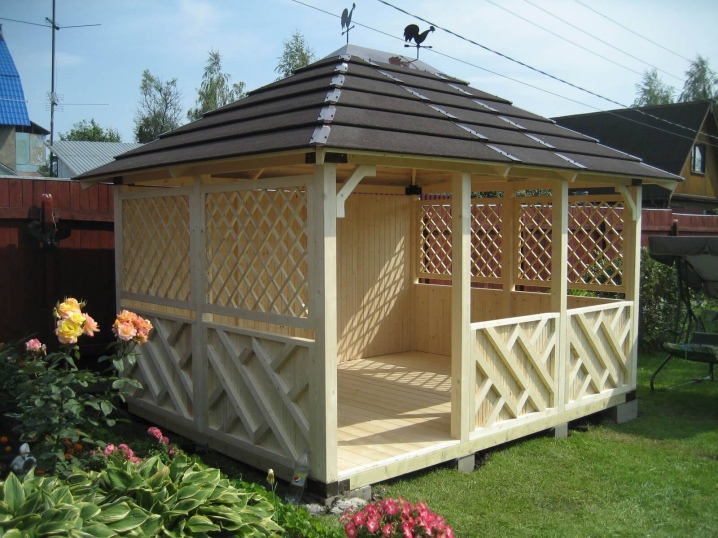
Advantages and disadvantages
The task of the gazebo is not only to provide a comfortable rest for its owners, but also to organically integrate into the environment, to become a decoration of the landscape... The materials and style of the building should overlap with other elements of the building of the yard or garden.
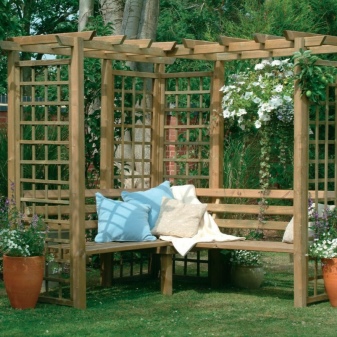
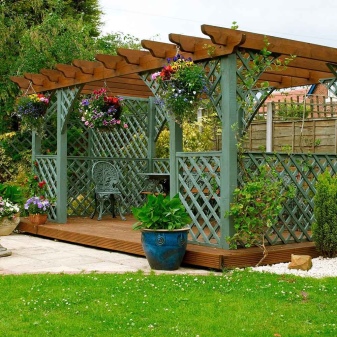
A beautiful decorative lathing is suitable for both a summer cottage and a gazebo with a designer design. Lattice structures have many advantages.
- They have a beautiful appearance.... The technology of laying the slats allows you to make different patterns of patterns or combine different directions of stripes in one building, which makes it especially attractive.
- The decorative grille is in good harmony with many styles and building materials used on the site. If the gazebo is surrounded by trees, thin wood slats will work well with them.
- Trellises allow you to keep climbing garden vegetation on the walls of the gazebo, which allows the building to blend in with the surrounding garden.
- Thanks to the grilles, the gazebo is filled with light and air, it looks light and extravagant. But at the same time, the life-giving shadow emanating from the roof protects those present from the scorching heat.
- The process of making trellis walls is simple, the owner of the gazebo can handle the work independently.
- If the building is a barbecue area, the smoke from cooking escapes easily through the lattice walls.
- The use of slats for the construction of a gazebo will help to reduce the cost of the project budget. By the way, the larger the cage, the fewer strips will be needed to make the tapestries and the cheaper the object will be.
- If the budget does not matter, the planks are chosen from strong varieties of trees (oak, beech, walnut), they will cost more, but will extend the operational life of the construction... Some owners order the decoration of the gazebo with woodcarving, turning it into an expensive, unusually beautiful fairy-tale house.
There are few disadvantages to gazebos with a crate: they do not protect well from the wind, from insects, and do not keep warm. But this only says that the building has a summer purpose. To neutralize these disadvantages, you need to build walls, and this will already be a winter version of the building.
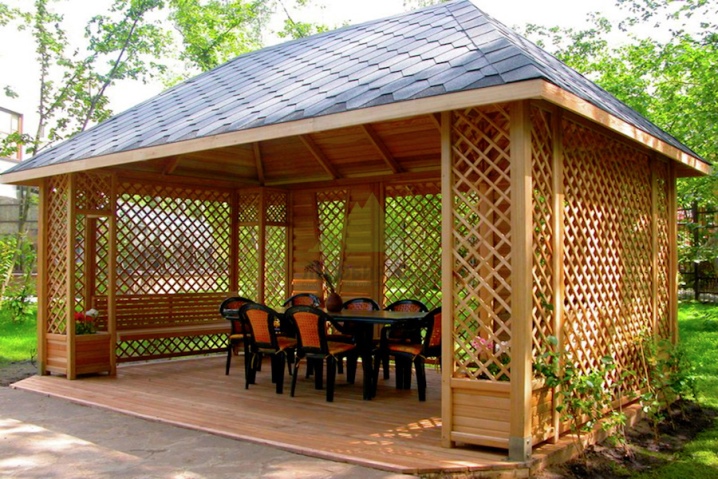
Plank placement options
The location of the planks can be performed at different angles, there is a vertical or horizontal orientation - all this allows you to diversify the pattern of the lathing. According to the placement of the strips, the following types of trellises are distinguished.
Straight
The simplest type of crate available even for a beginner... The planks are connected perpendicularly, at right angles. Square cells can contain different sizes, depending on the taste of the owner of the gazebo. Rectangular trellises are convenient for filling walls with climbing plants.
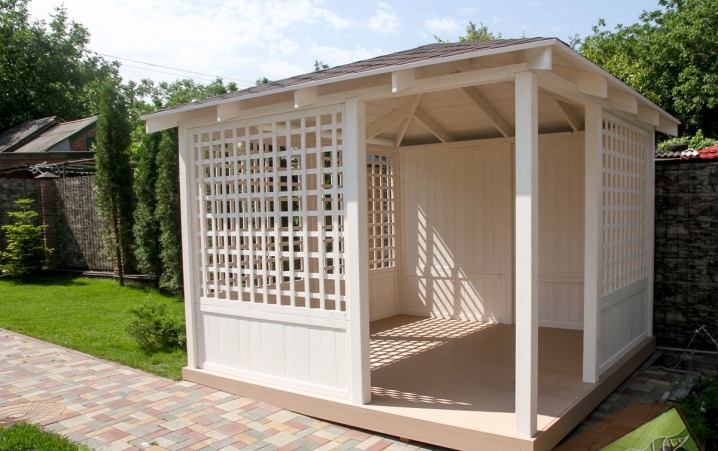
Diagonal
Most often, the slats for arranging the gazebo are placed at an angle of 45 degrees. But the diagonal can be more beveled, creating an elongated rhombic shape of the cells.As with squares, diamonds are created in different sizes. Small ones form a rich structure of walls, through which it is difficult to see people inside the building. Large rhombic gaps allow the sun's rays to actively penetrate the gazebo, filling it with beautiful highlights.
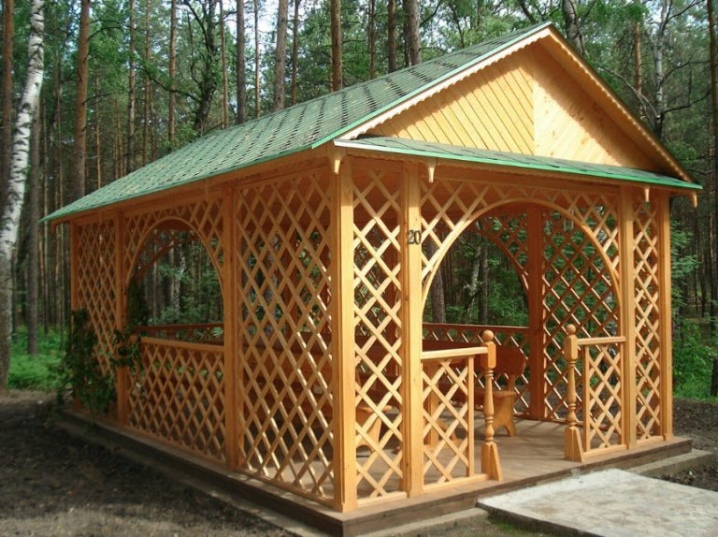
The diagonal version of the crate looks more spectacular than the square one, but it is more difficult to create it, you have to monitor the accuracy of the angle.
Alternatives include more sophisticated patterns used to decorate gazebos of different styles. Often they resort to combining lattices with rhombuses and squares. Such walls can be combined with balusters, carved columns.
It is more convenient to get acquainted with the variety of types of crate with examples.
- Diagonal trellis, enclosed in rounded frames, are decorative windows located on all sides of the gazebo.
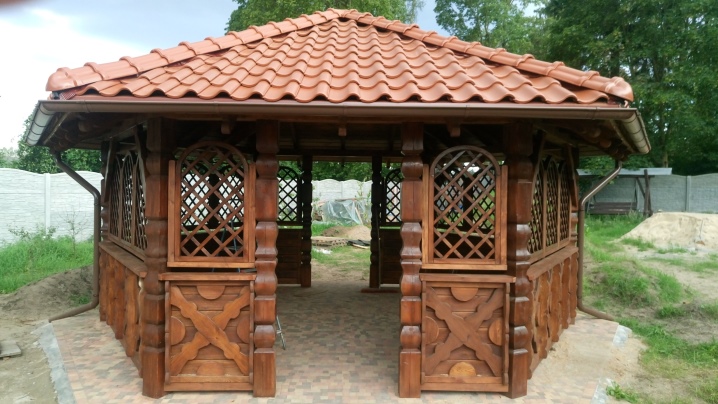
- Amazingly beautiful building with different designs. From the facade, the walls are decorated with carved elements, along the perimeter - balusters, and at the top - with rhombic gratings.
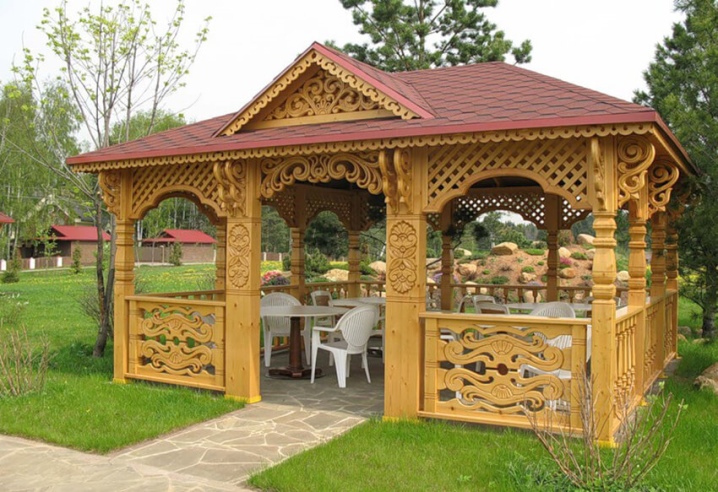
- Few counter strips formed a diagonal lattice in each window of the gazebo and became a decoration of a budget building.

- The lathing of this building is even simpler, consists of one-sided slats laid out at an angle.
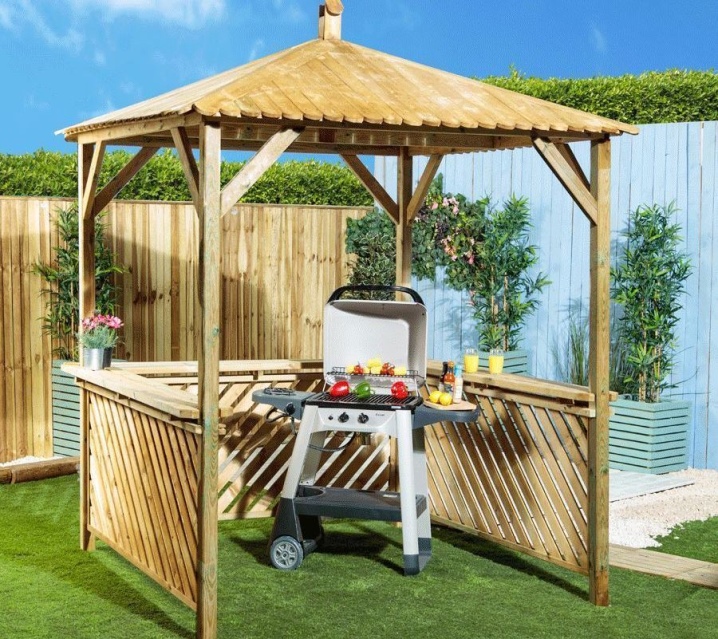
- It took to the gazebo minimum number of planks, but they formed an unusual attractive pattern.
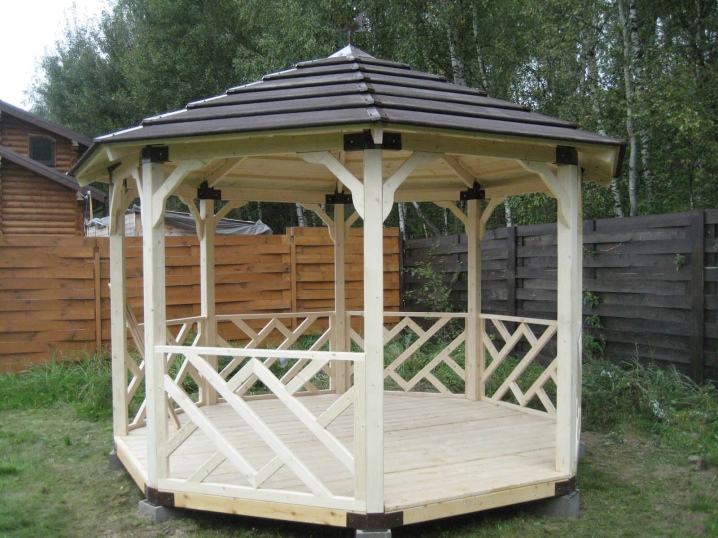
- Gazebo in style country with lattice walls.
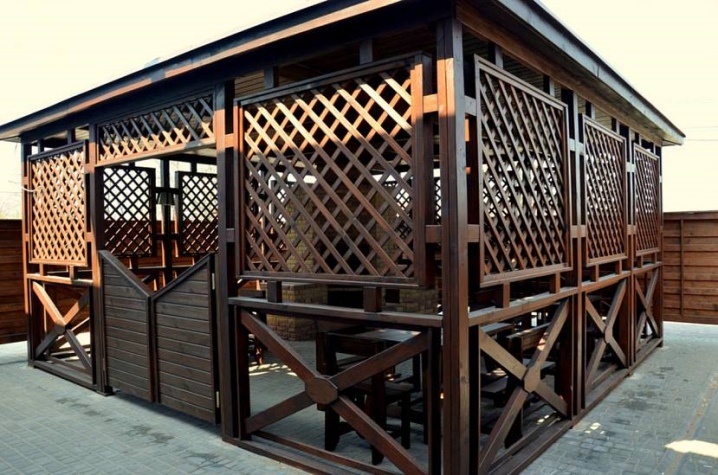
- Two walls and a trellis roof form a cozy environment around wooden benches.
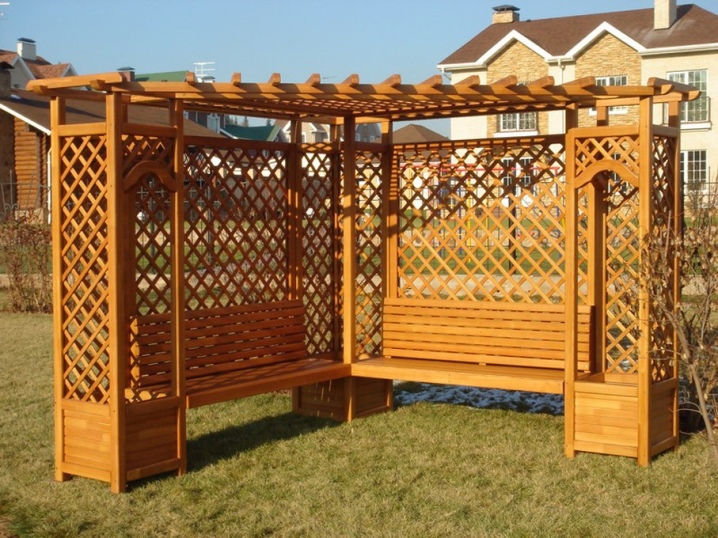
- Compact pergola with square lathing... The shallow and dense mesh creates a pleasant shade in the seating area.
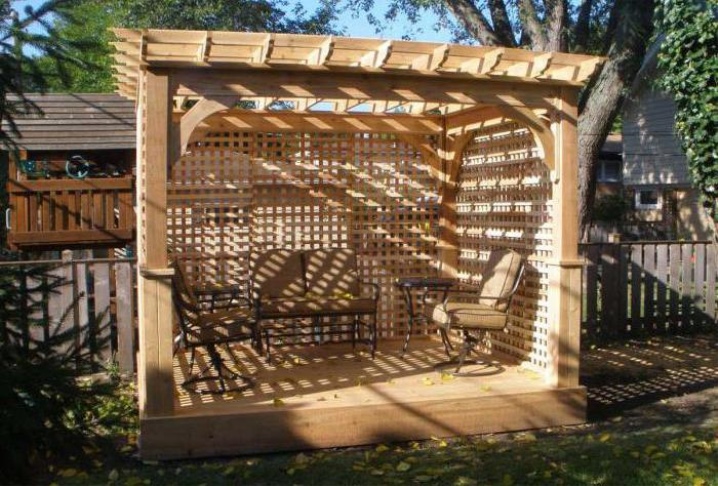
- Combined version of the gazebo represented by gratings with different directions - diagonal and square.

Material selection
Lattices for garden gazebos are made of three types of material - plastic, metal and wood.
Plastic
A ready-made plastic gazebo with a crate from a domestic or Chinese manufacturer can be purchased at hardware stores. The products are lightweight and quickly assembled. For their installation, a specialist is not required, it is quite possible to do it on your own. But the foundation on which the structure will be installed should be prepared in advance. An easy construction does not need a foundation that is too deep.
The advantages of the plastic lathing include easy maintenance of it, the product does not bend, retains its original appearance for a long time, is quickly mounted and is inexpensive.
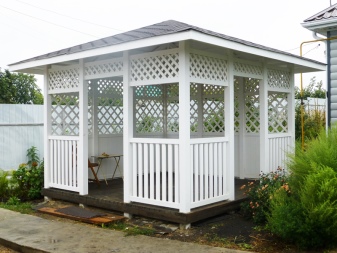

Metal
Forged products belong to metal crate, they are made to order. Unlike plastic, decorative structures require a reinforced frame, solid walls, foundation or stone base. The amazingly beautiful appearance of openwork forging during operation will justify all the costs. Such gazebos do not seem light and airy, but they will be durable and eternal.
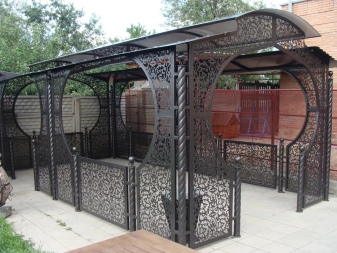
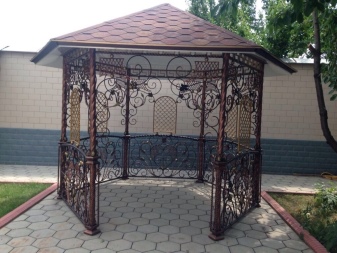
Wooden
Wood is traditionally the most popular material for gazebos.... The wooden lathing gives lightness to the product, fills it with air and light. In order for the building to serve for a long time, all elements should be treated with antifungal compounds and protected with a paint and varnish layer.
The crate can be purchased ready-made in the construction market, ordered by a specialist, or made by yourself. If a budget option is needed, the product is made of pine or spruce. For long-term use, wood of dense varieties is chosen - robinia, cherry, ash, maple.
We propose to consider in more detail some breeds for the manufacture of lathing.
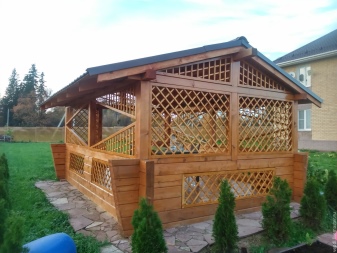
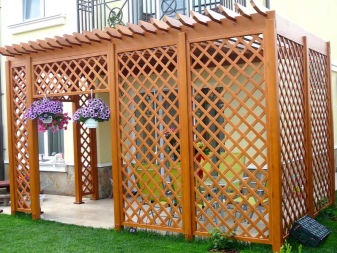
Oak
Strong and flexible wood at the same time. Has a beautiful texture and shades. It is easy to grind, polish, paint, but more difficult to do artistic carving due to the density of the material. Oak slats will be strong and durable, although they will not be cheap.
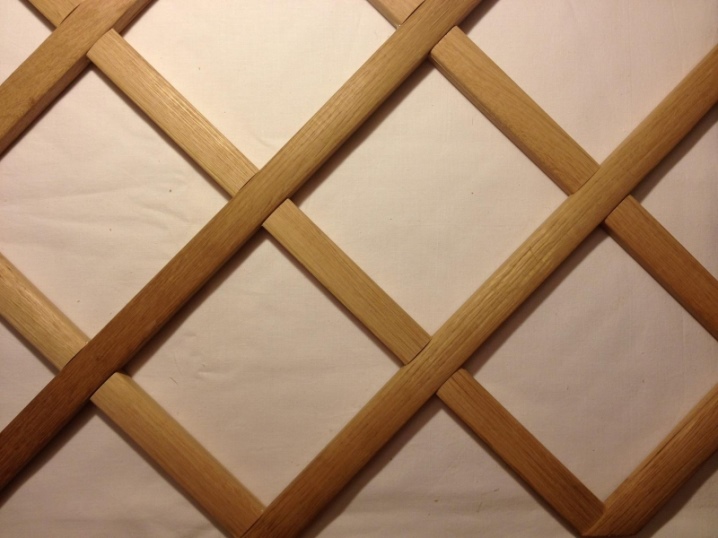
Beech
White beech wood has a reddish or yellowish tint, but after steaming in a special way, it acquires a rich red-brown color, for which they love to use it for the manufacture of various products.
The material has the ability to bend, which can be used to create an original lathing. In terms of strength, beech is as strong as oak, screws and nails are well held in its wood.
But beech has a drawback, the tree absorbs and retains moisture directly from the air, which provokes rotting of the material. The beech lathing on the gazebo will look great, but it won't last long.
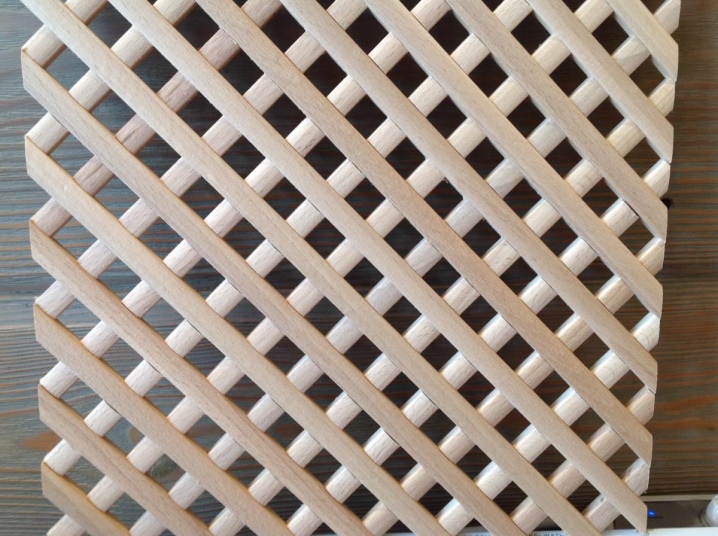
Pine
It is the most demanded material in the construction and furniture industry due to its low cost. Pine belongs to the soft varieties of trees, it is easy to leave scratches on the products, but the wood is also malleable in processing, unusually beautiful carved things are obtained from it. Pine exudes a pleasant coniferous aroma, creates around itself a healing microclimate with bactericidal properties.
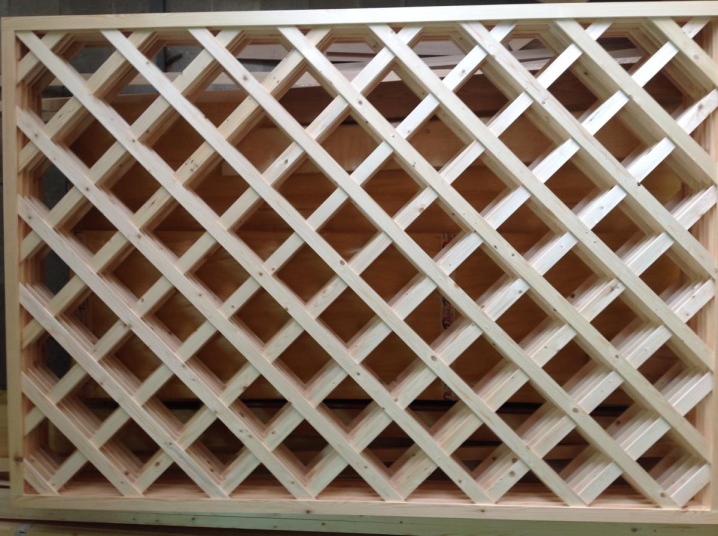
Larch
Ideal for outdoor applications. The wood is strong and durable, excellent resistance to decay. It is good to use larch in places with high humidity. It only gets stronger from water and time.
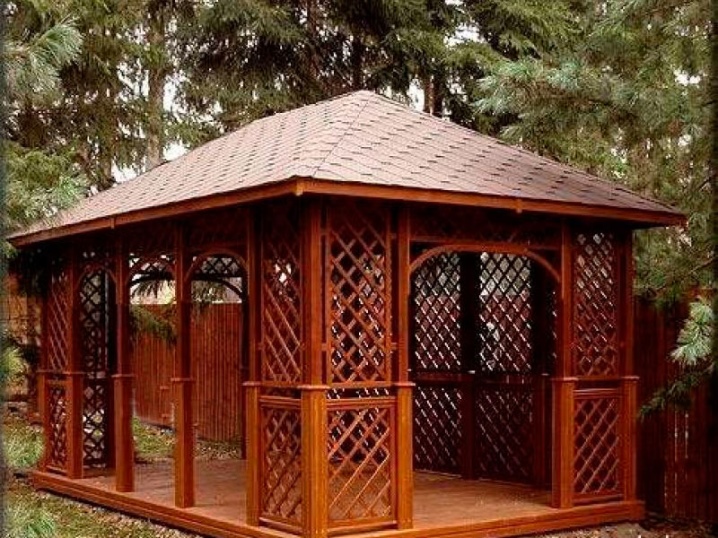
Ash
Refers to hard rocks. Its wood is flexible, but not porous, does not absorb moisture and perfectly resists decay. Due to the strength of the material, the lathing does not deform over time and serves for decades.
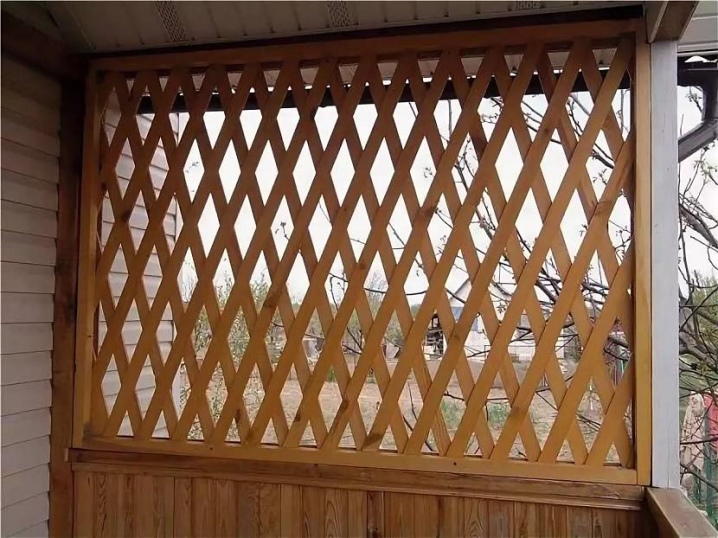
Aspen
Inexpensive building material with a reddish tint, has a strong structure. Well-dried products should be chosen as slats, then they, like larch, only gain strength and weight over the years.
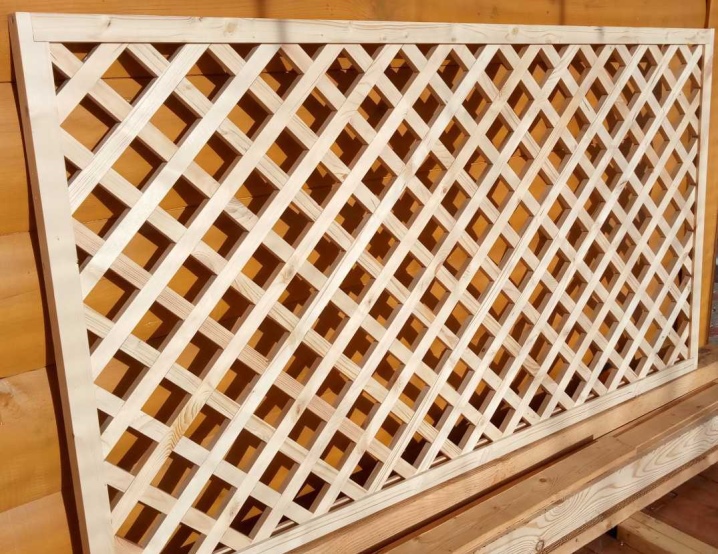
Step-by-step instructions for making wood
A product with square cells is easy to make yourself. It is more difficult to correctly make a diagonal lathing (at an angle). In order for it to work, it is necessary to constantly check and maintain the given slope.
Preparation
Having decided to build a gazebo with a crate, you need to sketch a diagram, draw up a drawing, make calculations - then it becomes clear how much material will need to be purchased. If the building is already ready and all that remains is to make and install the grate, you need to find out its size and choose the design of the product.
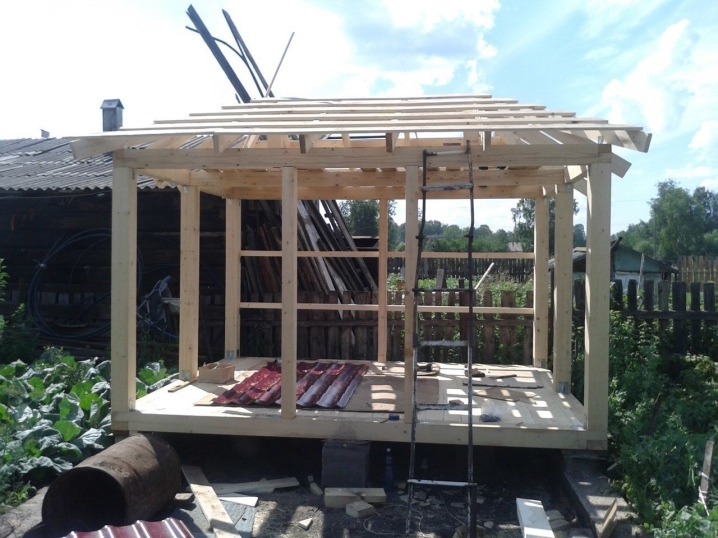
Before starting work, you need to prepare construction tools and materials. To create the lathing you will need:
- slats, bars (the length and thickness of the material are indicated in the project);
- fasteners and tools for fastening (screwdriver, hammer);
- jigsaw or saw;
- glue;
- marking tools (tape measure, level, pencil);
- antibacterial mixtures and paints and varnishes.
Next, you should choose a spacious place where you can assemble the frame and have access to it from all sides to create the lathing. Planing surfaces and treating wood with antifungal agents are also included in the preparatory stage.

DIY assembly
Knowing the dimensions of the openings of the gazebo, they begin to make the frame from the bars. Four beams are connected according to the type of thorn-eyelet, that is, a groove is cut out from one end, and a thorn from the other, which enters the prepared hole. The structure is fixed with wood glue. After drying, proceed to the execution of the sheathing itself.
Markings are made on the frame, with their help the slats will be attached. When cutting strips, in order not to make a mistake with the size, it is better to provide a margin of length. The finished structure can be trimmed with an electric jigsaw.
According to the markings, slats are installed on the frame using glue. Despite the marks, the angle of inclination should be constantly checked, the slightest deviation will spoil the visual presentation of the crate. The finished product is sanded and varnished or painted to match the gazebo.
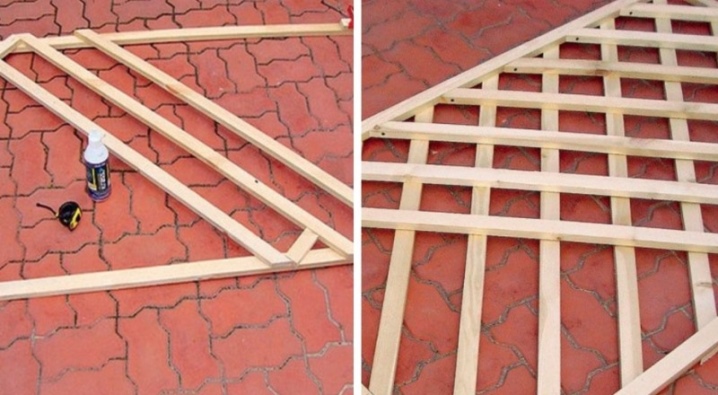
When the manufacturing process of all the modules is completed, they are installed in the openings of the summer building and fixed with nails.
A beautiful airy gazebo is ready. It is good for both summer cottages and private households. With the help of the planted climbing plants, you can revive the wooden trellises and create a cozy romantic corner inside the building.
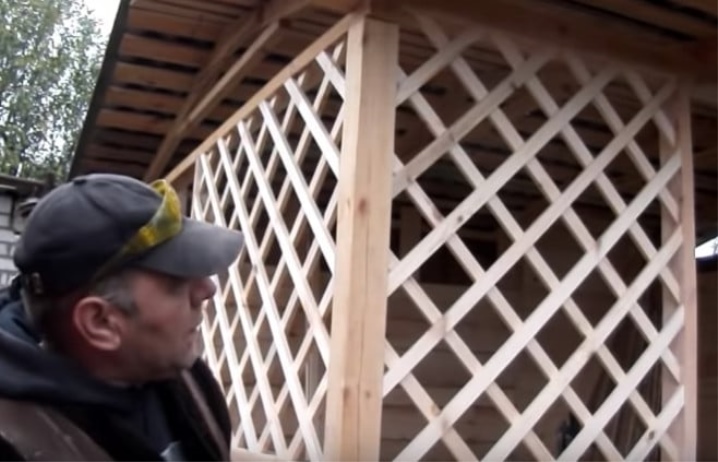
For information on how to make a crate for a garden gazebo with your own hands, see the next video.





























































The comment was sent successfully.